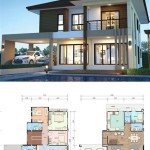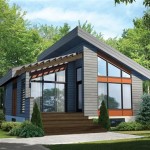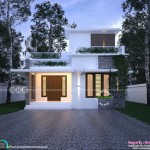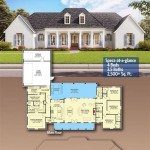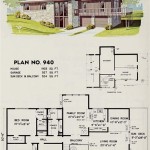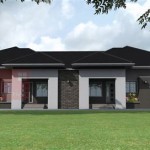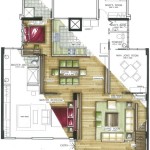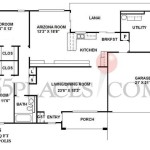East Facing Triple Bedroom House Plans: Maximizing Sunlight and Space
East-facing house plans are highly favored in many cultures due to their association with positive energy and the advantage of receiving morning sunlight. When these plans incorporate three bedrooms, they offer a blend of functionality, space, and natural light, making them ideal for families or individuals who require extra room for guests, home offices, or hobbies. This article delves into the considerations, benefits, and design elements crucial for creating effective east-facing triple bedroom house plans.
The orientation of a house significantly impacts its thermal efficiency and natural lighting. East-facing homes benefit from morning sun exposure, which can help warm the house during cooler months and provide ample natural light throughout the day. However, it is crucial to mitigate the potential for overheating in the afternoon, particularly in warmer climates. Thoughtful design and appropriate building materials can address this need.
Before embarking on the design process, it is imperative to consider local building codes and regulations. These regulations can dictate setbacks, height restrictions, and permissible building materials. Adherence to these regulations is non-negotiable and ensures a compliant and safe structure.
Key Considerations for East-Facing Triple Bedroom House Plans
Designing an east-facing triple bedroom house requires careful consideration of several factors to optimize both functionality and comfort. These considerations range from room placement to material selection and energy efficiency.
1. Room Placement and Orientation: The placement of rooms within the house is vital. Bedrooms benefit significantly from eastern exposure, as they receive gentle morning sunlight, creating a pleasant and natural start to the day. The master bedroom, in particular, should ideally be positioned to capture this morning light. Living areas, such as the living room and dining room, can also benefit from eastern exposure, providing a bright and welcoming space for family gatherings and relaxation. Conversely, rooms that are less frequently used or require cooler temperatures, such as storage rooms or home theaters, can be placed on the west side of the house to minimize afternoon sun exposure.
The kitchen's placement also requires careful consideration. While morning light in the kitchen is desirable, excessive afternoon heat can make cooking uncomfortable. Strategies such as shading devices or placing the kitchen partially on a north-facing side can help mitigate this issue. Placement of bathrooms should consider plumbing access and privacy, but they can generally be placed on either side of the house.
2. Natural Light and Ventilation: Maximizing natural light is a key benefit of east-facing homes. Large windows and strategically placed skylights can enhance the amount of natural light entering the house, reducing the need for artificial lighting during the day. However, it is essential to balance natural light with thermal control. Excessive direct sunlight can lead to overheating, particularly in the summer. Overhangs, awnings, and strategically planted trees can provide shade during the hottest parts of the day, mitigating this issue. Window treatments, such as blinds, curtains, or solar shades, can also be used to control the amount of light entering the house and maintain a comfortable indoor temperature.
Ventilation is equally important. Cross-ventilation, achieved by placing windows on opposite sides of the house, allows for natural airflow, reducing the need for air conditioning. East-facing homes can benefit from prevailing wind patterns, facilitating cooling breezes throughout the house. Proper insulation is also crucial for maintaining a comfortable indoor temperature and reducing energy consumption. Walls, roofs, and floors should be adequately insulated to minimize heat transfer, keeping the house cool in the summer and warm in the winter.
3. Material Selection and Energy Efficiency: The choice of building materials significantly impacts the energy efficiency and overall comfort of the house. Materials with high thermal mass, such as concrete or brick, can help regulate indoor temperature by absorbing and releasing heat slowly. These materials are particularly effective in moderating temperature fluctuations, keeping the house cooler during the day and warmer at night. However, they can also take longer to heat up or cool down, so consideration should be given to climate and personal preferences.
Insulated windows and doors are also essential for reducing energy loss. Double-paned or triple-paned windows with low-E coatings can significantly reduce heat transfer, improving the energy efficiency of the house. Weatherstripping around doors and windows helps to prevent drafts, further reducing energy loss. Roofing materials should also be chosen for their thermal properties. Light-colored roofing materials reflect sunlight, reducing heat absorption and keeping the house cooler. Green roofs, which are covered with vegetation, provide excellent insulation and can also help manage stormwater runoff.
Sustainable and eco-friendly materials are increasingly popular choices for home construction. These materials, such as bamboo flooring, recycled wood, and low-VOC paints, are not only environmentally friendly but also contribute to a healthier indoor environment. Sustainable materials can also have excellent thermal properties, further enhancing the energy efficiency of the house.
Design Elements for Triple Bedroom East-Facing Homes
Several design elements can enhance the functionality and aesthetics of a triple bedroom east-facing home. These elements range from layout considerations to the incorporation of outdoor spaces and the selection of interior finishes.
1. Layout and Flow: The layout of the house should prioritize a seamless flow between different living spaces. An open floor plan, which combines the living room, dining room, and kitchen into a single large space, promotes a sense of spaciousness and facilitates social interaction. However, it is important to define distinct zones within the open floor plan to maintain a sense of order and structure. This can be achieved through the use of furniture, area rugs, or changes in flooring material.
The placement of bedrooms should provide privacy and separation from the main living areas. A common layout is to cluster the bedrooms together in a separate wing of the house, away from the noise and activity of the living room and kitchen. The master bedroom should be positioned to maximize morning sunlight and ideally include a private en-suite bathroom and walk-in closet. The other two bedrooms can be designed as guest rooms, children's rooms, or home offices, depending on the needs of the occupants.
Hallways should be kept to a minimum to maximize usable floor space. A well-designed hallway can also serve as a gallery space for displaying artwork or photographs. Staircases should blend seamlessly into the overall design of the house, providing easy access to different levels while also serving as a visual focal point.
2. Outdoor Spaces: Integrating outdoor spaces into the design of the house can significantly enhance the living experience. East-facing homes are particularly well-suited for outdoor living, as they receive gentle morning sunlight and are shaded from the harsh afternoon sun. A front porch or veranda can provide a welcoming space for greeting guests and enjoying the morning air. A back patio or deck can serve as an outdoor dining area or a relaxing space for lounging and entertaining.
Landscaping also plays a crucial role in enhancing the aesthetics and functionality of outdoor spaces. Strategically planted trees and shrubs can provide shade, privacy, and visual interest. A well-designed garden can attract birds and butterflies, creating a vibrant and inviting outdoor environment. Water features, such as fountains or ponds, can add a sense of tranquility and relaxation to the outdoor space.
Outdoor kitchens are becoming increasingly popular, allowing homeowners to prepare and enjoy meals outdoors. An outdoor kitchen can include a grill, sink, refrigerator, and countertop space, providing all the necessary amenities for outdoor cooking and entertaining. Fire pits or outdoor fireplaces can extend the use of outdoor spaces into the cooler months, providing warmth and ambiance.
3. Interior Finishes and Aesthetics: The selection of interior finishes and aesthetics should reflect the personal style and preferences of the occupants. A cohesive design scheme, which incorporates consistent colors, materials, and patterns, can create a sense of harmony and balance throughout the house. Neutral color palettes are often preferred for their versatility and ability to create a calming and relaxing atmosphere. However, pops of color can be incorporated through artwork, accessories, or accent walls to add visual interest.
Flooring materials should be chosen for their durability, aesthetics, and ease of maintenance. Hardwood flooring is a classic choice that adds warmth and elegance to any room. Tile flooring is a durable and water-resistant option that is well-suited for bathrooms and kitchens. Carpeted flooring provides softness and comfort, making it a popular choice for bedrooms and living rooms.
Lighting fixtures should be chosen for their functionality and aesthetic appeal. Ambient lighting, which provides overall illumination, should be supplemented with task lighting for specific activities and accent lighting to highlight architectural features or artwork. Natural light should be maximized through the use of large windows and skylights. Window treatments, such as blinds, curtains, or shades, can be used to control the amount of light entering the house and provide privacy.
Adapting Plans to Specific Needs
While general guidelines provide a strong foundation, adapting east-facing triple bedroom house plans to specific needs and preferences is essential. This customization ensures the final product truly reflects the homeowner's lifestyle and requirements.
Accessibility: For individuals with mobility challenges, accessibility should be a primary consideration. This may involve incorporating wider doorways, ramps instead of stairs, and accessible bathrooms with grab bars and roll-in showers. Single-story east-facing triple bedroom house plans eliminate the need for stairs altogether, making them an ideal choice for those concerned about accessibility.
Climate-Specific Design: Recognizing the local climate is crucial. In warmer regions, shading strategies, light-colored materials, and efficient air conditioning systems are essential to prevent overheating. In colder climates, insulation, south-facing windows (in addition to east), and efficient heating systems are paramount for maintaining comfortable temperatures.
Lifestyle Considerations: A family that loves to entertain may prioritize a large, open-plan living area and an expansive outdoor patio. Those who work from home may require a dedicated office space with ample natural light and sound insulation. Tailoring the design to these specific lifestyle needs ensures the house is not only aesthetically pleasing but also highly functional.

Images By Riaz Ahmad On Mehendi 2bhk House Plan 30x40 Vastu Small Plans New

3bhk East Facing House Plan In First Floor 30x40 Site Plans Single Design

30x40 3bhk East Facing House Plan 2bhk Plans Little

35x45 East Face 3bhk 3 Bed Room With Drawing House Plan Parking Porch As Per Vastu Y Three Bedroom Plans Beautiful

50x60 East Facing 3bhk House Plan And Designs Books

East Facing Vastu Home 40x60 Everyone Will Like Acha Homes

35 X37 9 3bhk East Facing House Plan As Per Vastu Shastra Autocad Dwg And File Details Little Plans 30x40 Town

3 Bed Room 4 East Facing House Plan 38x38 Feet Bhk Face With Puja

38x30 East Facing 3 Bed Room Best House Plan 3bhk With Living Dining Area Asper Vastu

38 X 47 East Face 3 Bed Room House Plan As Per Vastu In 2024 Plans How To Home Design

